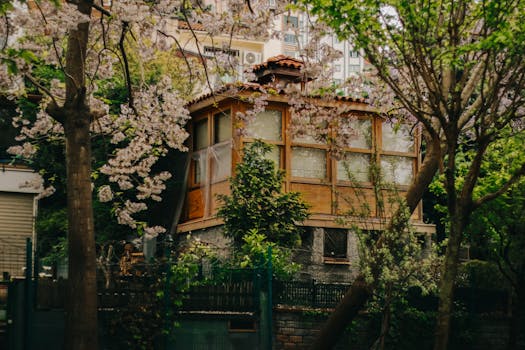
Urban Green Spaces: The Future of Outdoor Living in European Cities by 2025
Urban Green Spaces: The Future of Outdoor Living in European Cities by 2025 is a vital aspect of creating sustainable and livable cities. As the world becomes increasingly urbanized, the importance of green spaces in cities cannot be overstated. Green spaces, such as parks, gardens, and green roofs, provide numerous benefits to both the environment and human health.
Benefits of Urban Green Spaces
Urban green spaces offer a wide range of benefits, including:
- Improved air quality: Green spaces help to absorb pollutants and particulate matter, improving the overall air quality in cities.
- Climate regulation: Urban green spaces can help to mitigate the urban heat island effect, reducing the temperature in cities and improving comfort for residents.
- Noise reduction: Green spaces can act as a buffer against noise pollution, creating a more peaceful environment for city dwellers.
- Increased biodiversity: Urban green spaces provide a habitat for a wide range of plant and animal species, helping to maintain biodiversity in cities.
- Improved mental health: Spending time in green spaces has been shown to have a positive impact on mental health, reducing stress and anxiety.
European Cities Leading the Way
Many European cities are leading the way in terms of urban green space development. Cities such as Copenhagen, Stockholm, and Amsterdam have implemented innovative green infrastructure projects, such as green roofs, urban forests, and parks.
For example, Copenhagen’s green roof initiative has resulted in over 60% of the city’s roofs being covered in greenery, providing insulation, reducing stormwater runoff, and creating habitats for wildlife.
Challenges and Opportunities
Despite the many benefits of urban green spaces, there are also challenges to be addressed. These include:
- Space constraints: Many cities are facing pressure to develop land for housing, commercial, and infrastructure projects, leaving limited space for green spaces.
- Funding: Creating and maintaining urban green spaces can be expensive, requiring significant investment from cities and private developers.
- Community engagement: Encouraging community involvement and engagement with urban green spaces is crucial to their success and longevity.
However, these challenges also present opportunities for innovation and creativity. For example, green walls, urban agriculture, and community-led green space initiatives can help to maximize space, reduce costs, and foster community engagement.
Conclusion
Urban Green Spaces: The Future of Outdoor Living in European Cities by 2025 is a critical component of creating sustainable, livable, and healthy cities. As we look to the future, it is essential that we prioritize the development and maintenance of green spaces in our cities, addressing the challenges and opportunities that arise.
By working together, we can create a future where urban green spaces are an integral part of city planning, providing numerous benefits for both the environment and human health.






